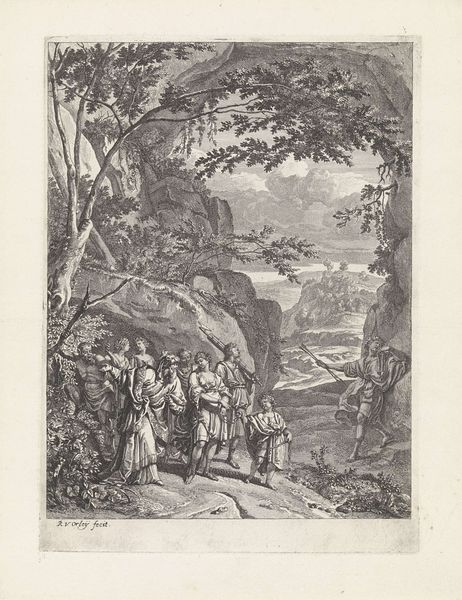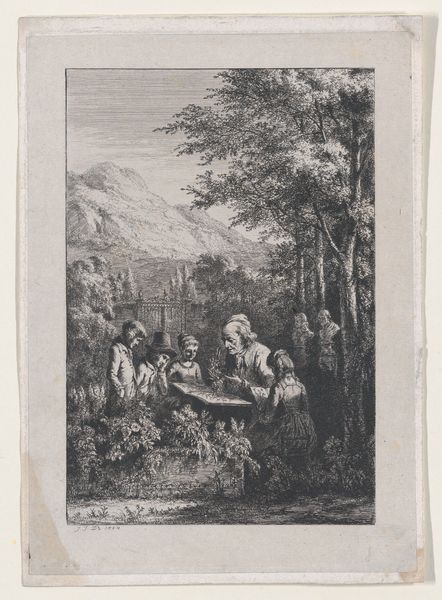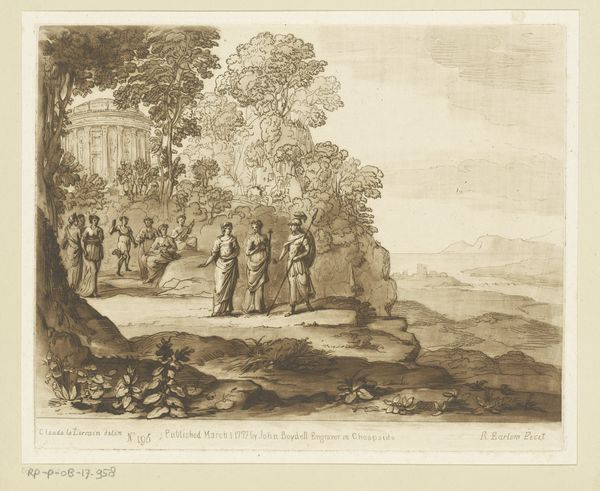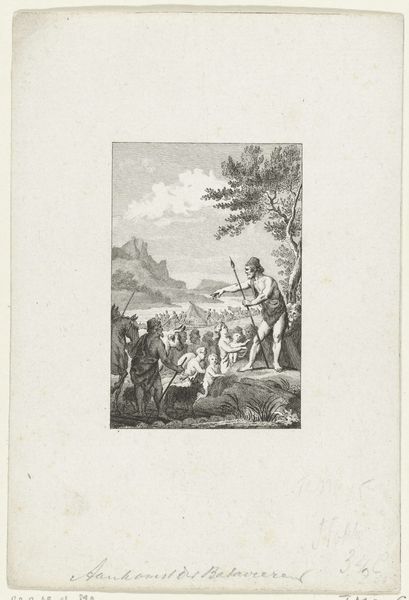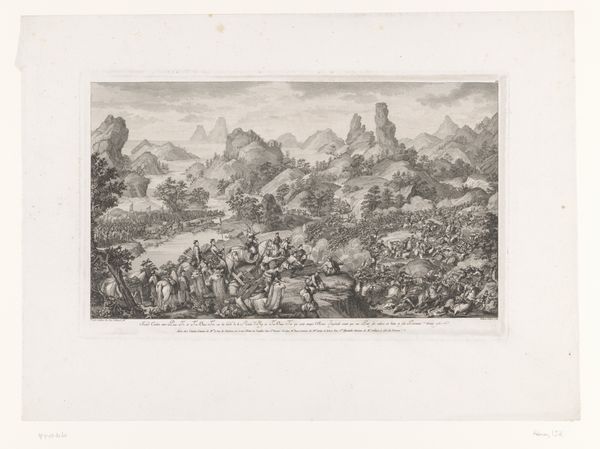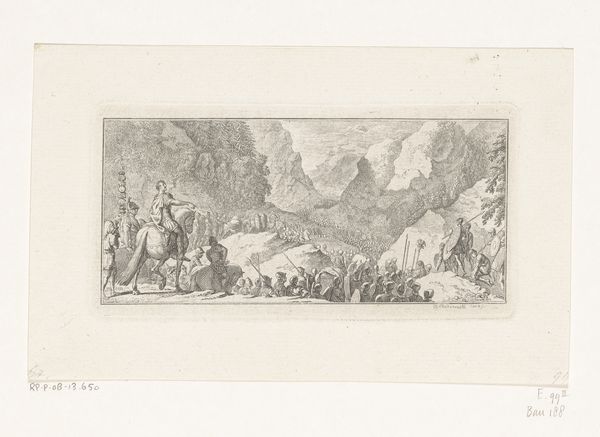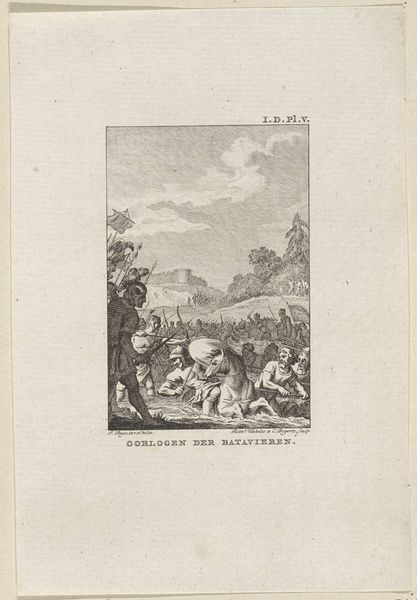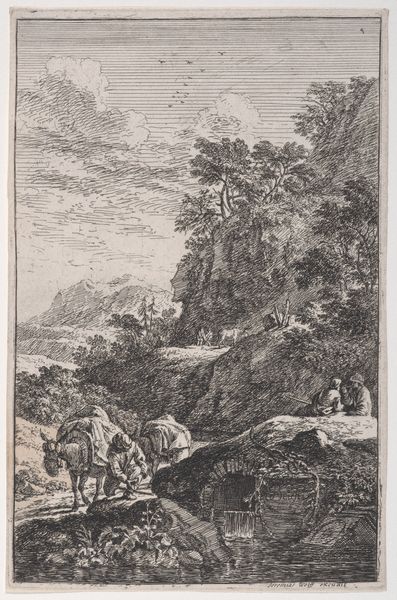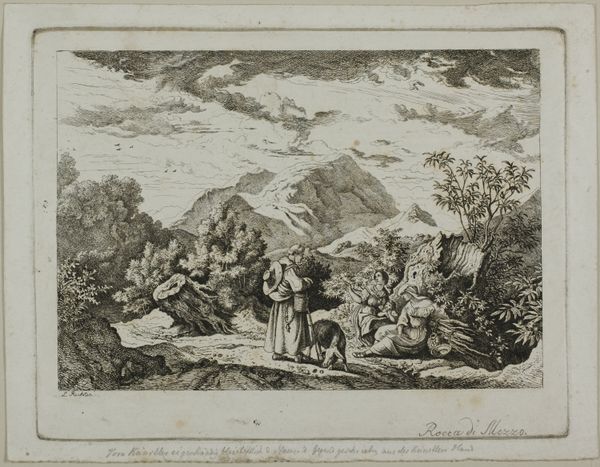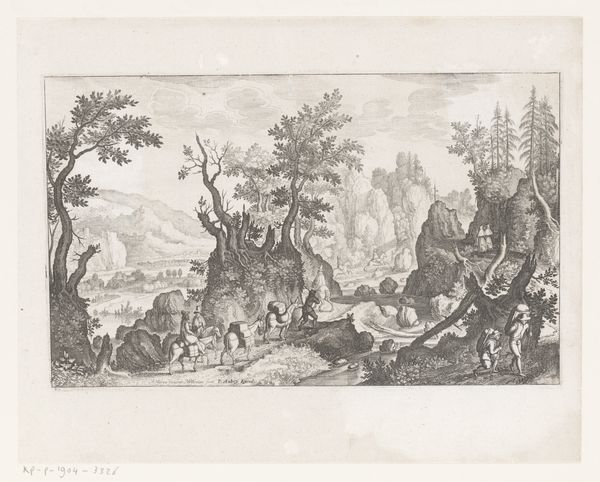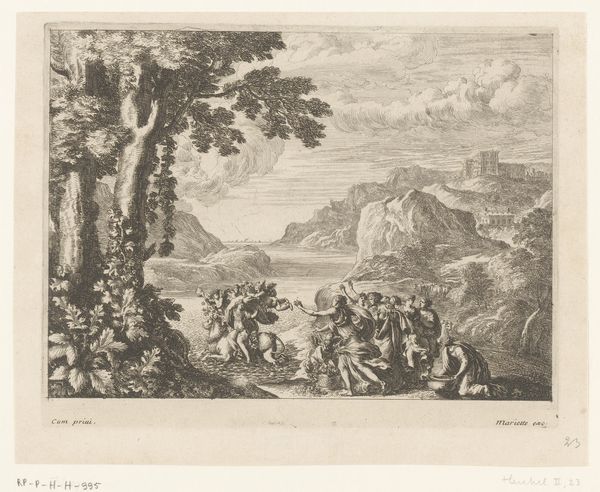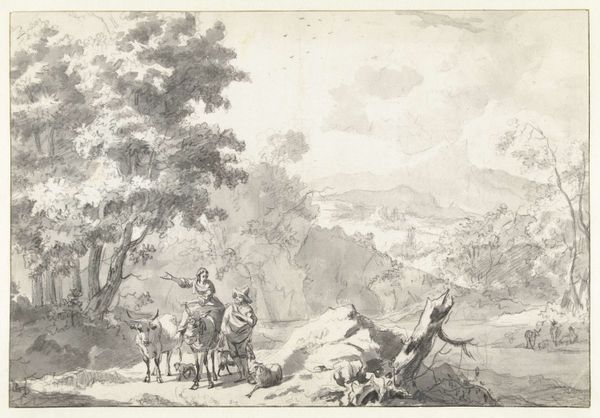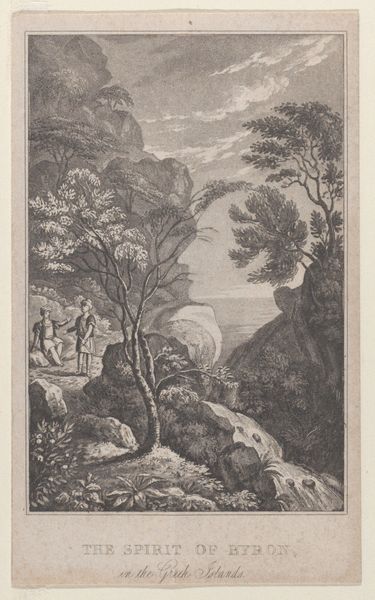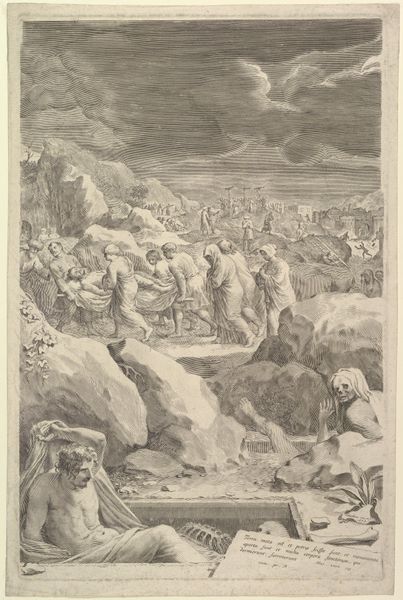
print, etching
#
narrative-art
# print
#
etching
#
landscape
#
etching
#
figuration
#
romanticism
#
history-painting
Dimensions: height 83 mm, width 51 mm
Copyright: Rijks Museum: Open Domain
Editor: This is "Vluchtende Kalmukken," or "Fleeing Kalmyks," an etching by Daniel Nikolaus Chodowiecki, from 1797. It’s currently held at the Rijksmuseum. It’s incredibly detailed for such a small print, and the sheer number of people depicted is overwhelming. How do you interpret this work? Curator: The power of this seemingly simple etching lies in its commentary on displacement and the human cost of conflict. Chodowiecki captures a historical event—the flight of the Kalmyks, a nomadic group, from Russia in the late 18th century, likely due to religious persecution and political pressure from Catherine the Great. Look closely at their faces. What do you see reflected there? Editor: A mix of exhaustion, fear, and maybe…resignation? Curator: Exactly. Now, consider the landscape. It’s not romanticized; it’s almost oppressive. This wasn’t some heroic migration; it was a desperate attempt for survival. It makes me think about contemporary refugee crises and the ways in which power structures can force entire populations into movement. The image resonates beyond its historical context, doesn’t it? How does the print speak to our current understanding of forced migration and identity? Editor: It really does. It's not just a historical record; it’s a reminder of the ongoing struggles of marginalized groups throughout history. The scale of the figures in the image makes them seem vulnerable but resilient at the same time. Curator: And the print as a medium makes it accessible, easily circulated, furthering the possibility to ignite compassion for these people. The very act of creating and distributing this image was a political act. What do you take away from this, considering the artist’s potential intentions? Editor: I hadn’t thought of it that way. It makes you consider the responsibility artists have to represent these narratives, but also to do it ethically, highlighting both suffering and resistance. It adds so much depth to the work. Curator: Indeed. Seeing art as intertwined with social justice allows for a more profound and multifaceted understanding of art history.
Comments
No comments
Be the first to comment and join the conversation on the ultimate creative platform.
